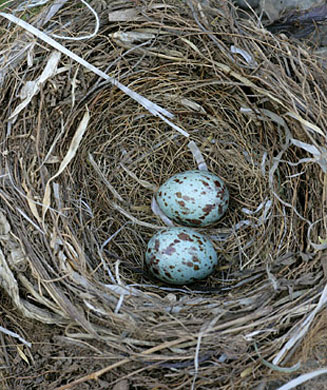|
Turdus smithi (Karoo thrush)
Geelbeklyster [Afrikaans]; Merle du Karroo [French]
Life
> Eukaryotes >
Opisthokonta
> Metazoa (animals) >
Bilateria >
Deuterostomia > Chordata >
Craniata > Vertebrata (vertebrates) > Gnathostomata (jawed
vertebrates) > Teleostomi (teleost fish) > Osteichthyes (bony fish) > Class:
Sarcopterygii (lobe-finned
fish) > Stegocephalia (terrestrial
vertebrates) > Tetrapoda
(four-legged vertebrates) > Reptiliomorpha > Amniota >
Reptilia (reptiles) >
Romeriida > Diapsida > Archosauromorpha > Archosauria >
Dinosauria
(dinosaurs) > Saurischia > Theropoda (bipedal predatory dinosaurs) >
Coelurosauria > Maniraptora > Aves
(birds) > Order: Passeriformes
> Family: Muscicapidae > Genus: Turdus
Distribution and habitat
Endemic to southern Africa, occurring from southern Namibia
and Botswana to central and western South Africa. It generally prefers riverine
vegetation, such as riparian woodland along the Orange River, but it is also
common in suburban gardens, in fact it is in the top 8 most common birds in
Johannesburg.
Predators and parasites
It has been recorded as prey of the Booted eagle (Aquila pennatus).
Food
It eats a variety of fruit and small animals, doing most of
its foraging on the ground, flicking and scratching through leaf litter. The following food items have been recorded
in its diet:
- Animals
- Fruit
- Schinus molle (Pepper tree)
- Ziziphus mucronata (Buffalo-thorn)
- Kiggelaria africana (Wild-peach)
- Celtis africana (White-stinkwood)
- Rhus pyroides (Common currant)
- Diospyros lycoides (Bluebush star-apple)
- Pyracantha (firethorns)
- Cotoneaster
- hawthorn
- garden fruit
Breeding
- The nest (see image below) is built solely by the female, consisting of an
messy cup built mainly of moist, coarse grass with weed stems, leaves, bark
strips and twigs, lined with fine material such as rootlets; if material is
not already damp it is dipped in water. It is typically placed in a
three-pronged fork of a tree branch.
 |
|
|
Karoo thrush nest with eggs, Modimolle, South
Africa. [photo Warwick Tarboton ©] |
|
- Egg-laying season is from October-February.
- It lays 1-4 eggs, which are probably incubated solely by the female for
about 14 days.
- The chicks are brooded constantly for the first 2 days of their lives
and are fed on a diet of insects and other animals. They eventually leave
the nest after about 16 days but can barely fly, so they only become fully
independent about 2 months later.
Threats
Not threatened, in fact it has benefited from the
introduction of man-made habitats.
References
-
Hockey PAR, Dean WRJ and Ryan PG 2005. Roberts
- Birds of southern Africa, VIIth ed. The Trustees of the John Voelcker
Bird Book Fund, Cape Town.
|
